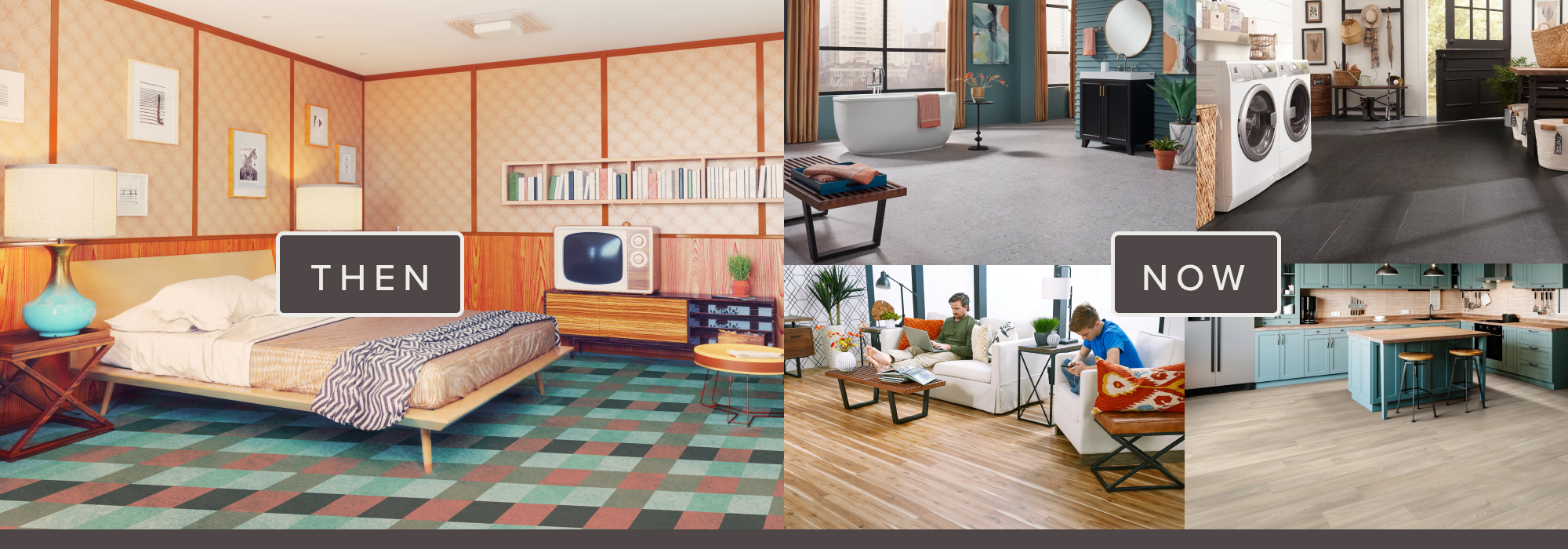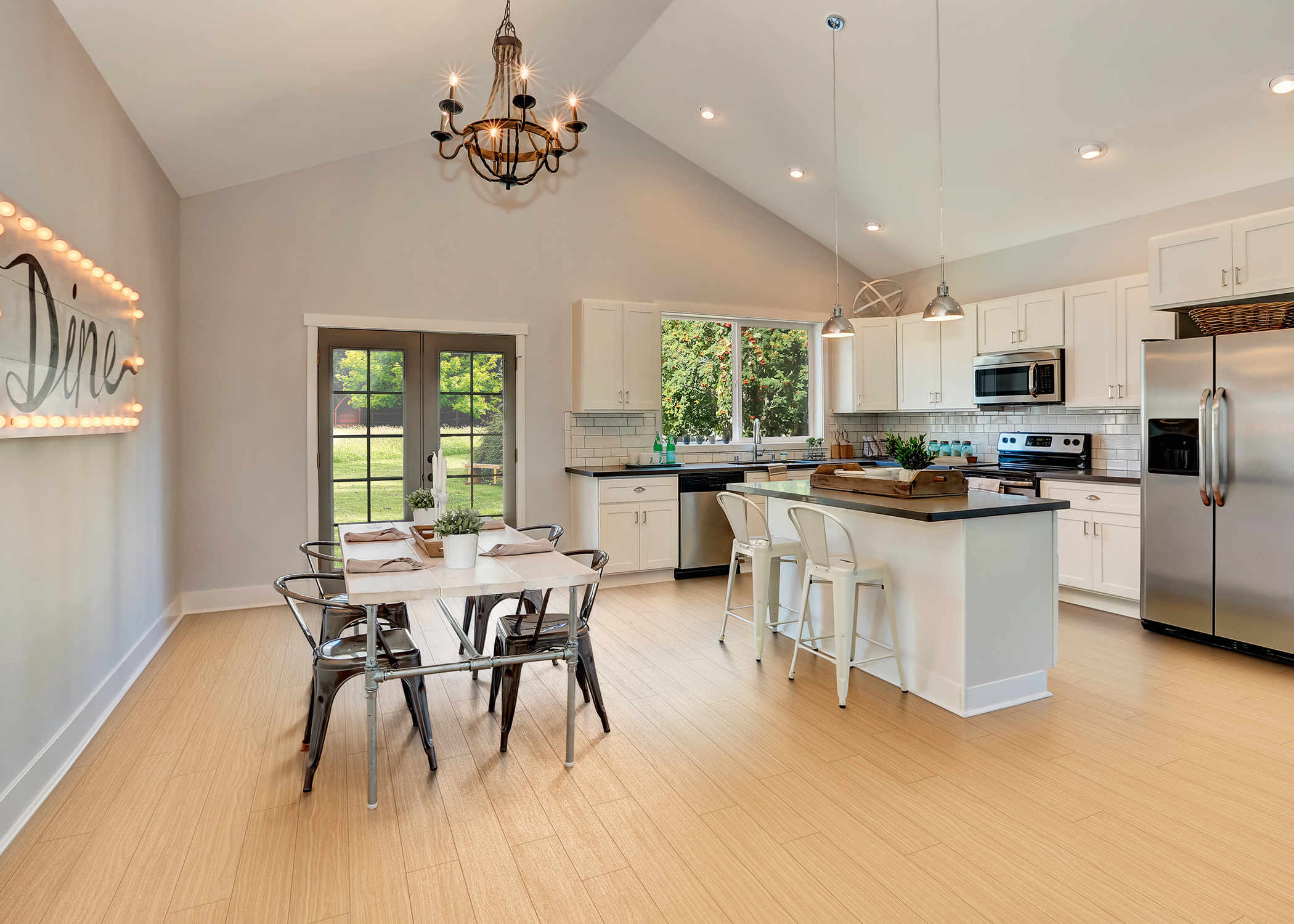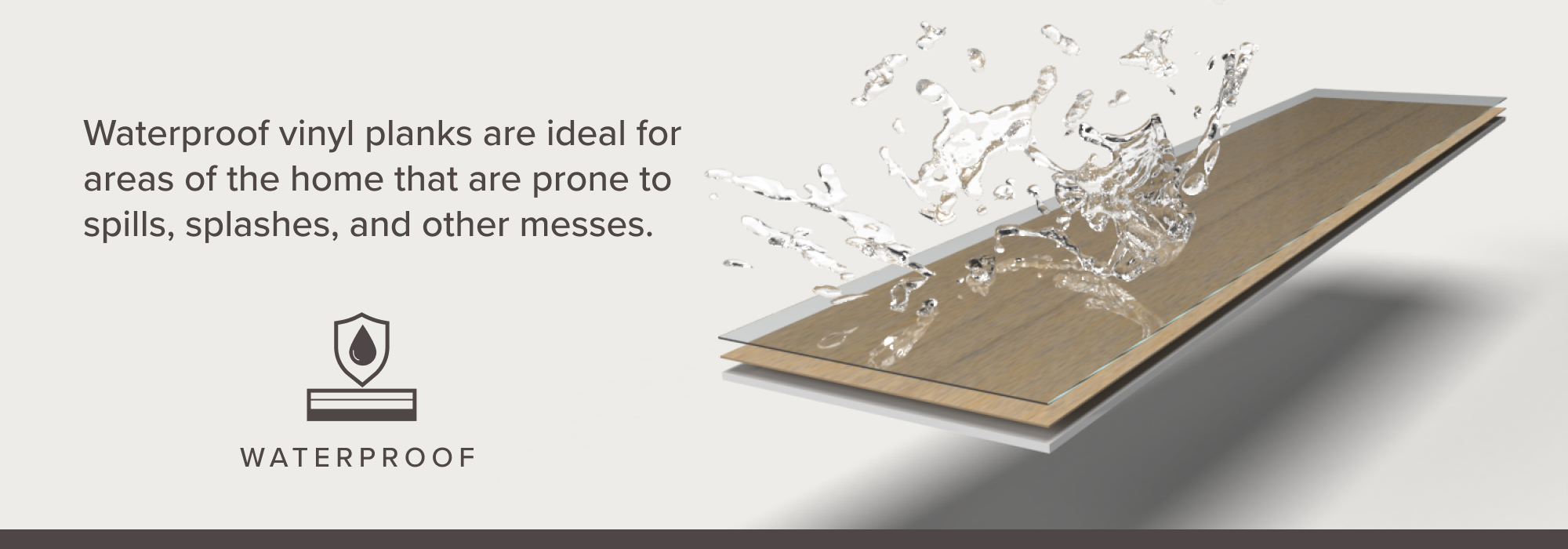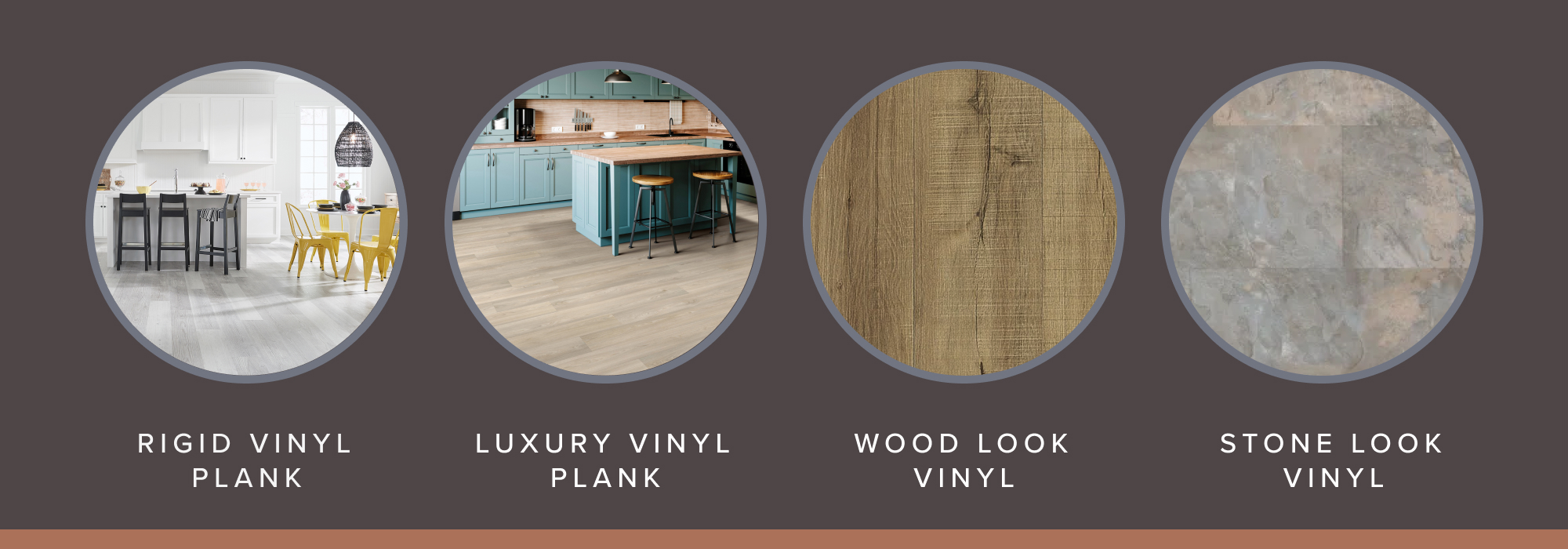- Home
- Education
- Flooring Basics
- Vinyl Flooring: Then and Now
Vinyl Flooring: Then and Now
Vinyl flooring is a long-lasting flooring option. Learn about this flooring's history and the modern innovations available.
Vinyl Flooring: A History of Innovation
Vinyl flooring has been around for decades, but today's offering has evolved significantly from its initial design. This versatile flooring is appealing to homeowners thanks to its budget-friendly price, innovative design, realistic looks, and DIY-friendly installation. Learn about how far vinyl flooring has advanced and see whether it could be the modern solution you're looking for.
History of Vinyl Flooring
As far back as the late 1800s and early 1900s, linoleum was becoming a popular residential flooring choice because of its resilience. It wasn't until the 1930s that vinyl flooring emerged as an alternative, and it took a while to build traction. However, by the 1950s and 1960s, it had gained popularity as a tough yet affordable flooring option for many homeowners.

Misconceptions of Vinyl Flooring
When vinyl flooring started reaching wider audiences in the 1960s, it was marketed as a cheaper flooring option compared to its predecessor, linoleum. This strategy meant that vinyl wasn't initially appealing to homeowners looking for a high-end interior design.
The vinyl of the 1960s came in bold patterns and bright colors reminiscent of the era and wasn't necessarily designed to mimic the classic looks of wood or stone flooring. Over time these designs began to look dated, creating the misconception that vinyl offered limited design choices.
However, with advances in modern technology, today's vinyl flooring looks anything but artificial, and it's a popular choice even for exclusive spaces.
Modern Vinyl Flooring
Today's vinyl flooring is a versatile choice suitable for every room and every level of the home. Let's take a closer look.
Mythbusting
While early vinyl flooring had a reputation for their artificial look, the development of luxury vinyl plank (LVP) flooring in the 1970s turned a corner. LVP comes in a wide array of designs and textures that mimic the look of solid wood or natural stone floors. As a result, LVP gained popularity in the early 2000s and continues to be a great choice for homeowners who want a traditional, natural look with modern performance and a budget-friendly price.
Vinyl Innovations
Vinyl flooring is designed to be a lasting choice for the home. This flooring is available in two styles: rigid vinyl plank and luxury vinyl plank. Both options are constructed using individual planks or tiles, not sheets, with several layers that each perform a valuable function.

The wear layer protects the flooring, and its thickness determines how long it will keep looking its best. If you're shopping for a long-term flooring option, you'll want to choose a thicker wear layer. The décor layer determines the look of the floor, including its color and texture. This layer may feature a wood-inspired or stone-inspired look. The core layer defines the plank's resistance to dents and its overall stability. Rigid vinyl plank (RVP) flooring has a stone polymer core that makes it especially resistant to damage. Finally, some vinyl products include a pre-attached pad at the base, for extra support and insulation. This innovative design makes RVP and LVP flooring a lasting addition to your home.
You can also count on vinyl flooring to be waterproof, making this flooring a reliable option for every room in your home—including bathrooms and kitchens. It offers protection from everyday accidents, including splashes and spills. As a result, homeowners with kids and pets can benefit from the peace of mind that this waterproof vinyl flooring brings.

Vinyl Design Options
Available in many styles, vinyl flooring offers natural looks for the home. Discover wood-inspired flooring that mimics favorite hardwood finishes. Blonde finishes bring a light, airy vibe into the space, while rustic flooring features visible wood grain and realistic knots that welcome warmth into the home. Medium and dark brown wood tones lend a timeless touch to any space.
Stone-look vinyl flooring replicates the beauty of natural stone flooring with easier installation and at a lower price point. Incorporate marble-inspired flooring into your bathroom to create an elegant space. Sleek slate-inspired flooring can serve as a focal point in any room. Travertine-inspired flooring works well in kitchens and bathrooms—on walls as well as floors.

Vinyl Installation
Another advantage of vinyl flooring is its DIY-friendly installation. This flooring can be installed on every floor of the home using several methods.
- Click-float installation. This method allows you to lock planks together with a click mechanism to create a floating floor.
- Peel-and-stick. Peel-and-stick vinyl planks have a convenient pre-applied adhesive that simplifies the installation for novice DIYers.
- Glue-down. This method uses an adhesive to secure your vinyl planks or tiles to your subfloor. We'd advise considering professional installation for this, as it requires more tools and expertise.
Different types of vinyl flooring offer different installation options, so it's important to always refer to your Warranty, Installation, & Care (WIC) guidelines for your chosen flooring before you start.
Modern vinyl flooring offers many designs and benefits, making it a popular choice among homeowners today. Shop LL Flooring's collection of vinyl flooring to discover the style that's right for you.


